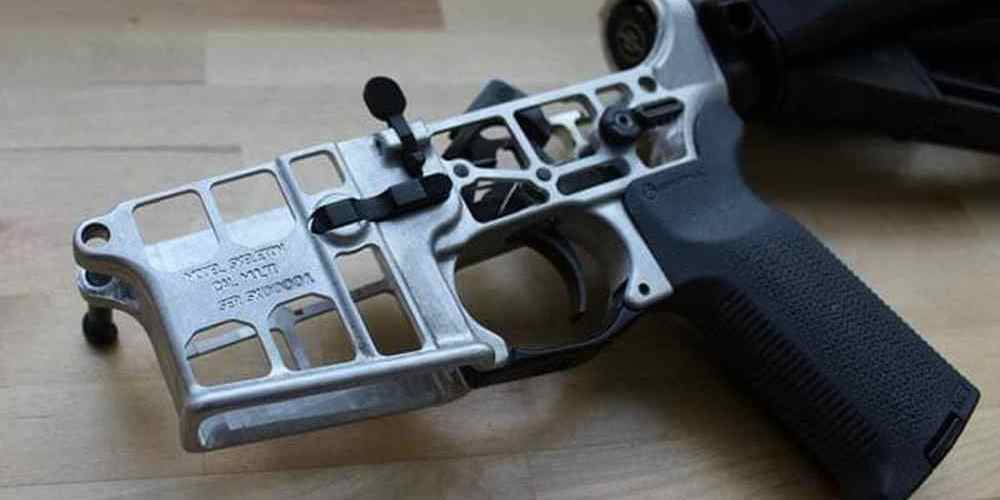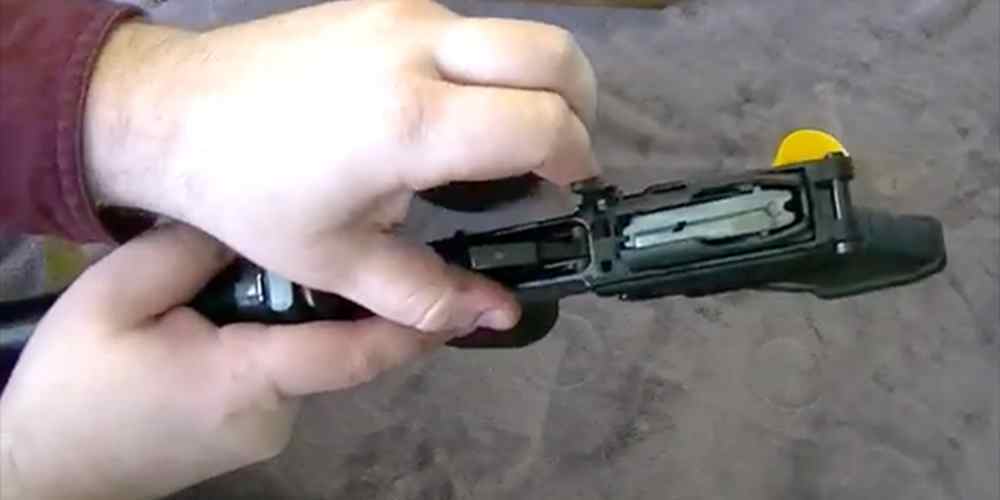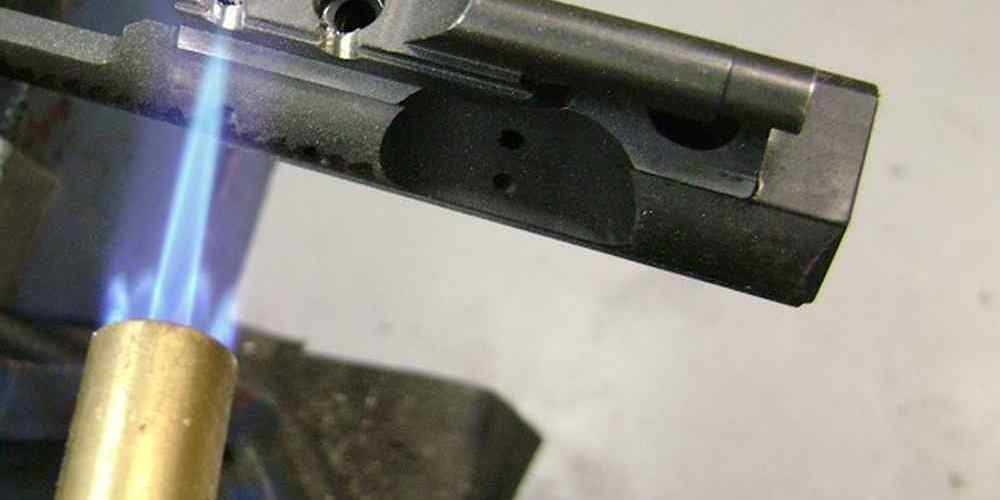“Lock, Load, and Fix: Mastering AR15 Magazine Malfunctions with Ease”
Troubleshooting AR15 Magazine Feeding Issues
Fixing the Feed: How to Repair Common AR15 Magazine Problems
Troubleshooting AR15 Magazine Feeding Issues
The AR15 is a popular firearm known for its reliability and versatility, but even the most dependable systems can encounter issues. One common problem that can disrupt the performance of an AR15 is magazine feeding issues. Fortunately, with a bit of know-how and some simple tools, most of these problems can be diagnosed and fixed by the user. In this article, we’ll explore how to identify and repair common AR15 magazine problems, ensuring that your firearm functions smoothly. Firstly, it’s essential to understand that the magazine is a critical component of the AR15’s feeding system. It holds the rounds in place and feeds them into the chamber as the firearm cycles. When there’s a hiccup in this process, it’s often due to the magazine. The most frequent issues include damaged feed lips, a weak or broken spring, follower problems, or debris within the magazine. To begin troubleshooting, ensure that your firearm is unloaded and safe to handle. Start by examining the magazine’s feed lips, which are the upper edges of the magazine that guide the rounds into the chamber. If these are bent or damaged, they can cause feeding issues. Gently bending them back into place with a pair of needle-nose pliers can sometimes resolve the problem. However, if the feed lips are severely damaged, it’s best to replace the magazine altogether. Next, consider the magazine spring. Over time, springs can weaken or break, leading to feeding issues due to insufficient force pushing the rounds up. Disassemble the magazine by removing the base plate and carefully take out the spring and follower. Inspect the spring for any signs of wear or breakage. If the spring appears damaged or has lost its tension, replacing it is a straightforward and cost-effective solution. The follower, which sits atop the spring and directly contacts the rounds, can also be a source of trouble. It should move freely within the magazine body without tilting or jamming. If the follower is sticking or not moving smoothly, it could be due to debris or a manufacturing defect. Cleaning the follower and the inside of the magazine with a solvent can often fix this issue. If the problem persists, consider replacing the follower with an aftermarket option designed to enhance reliability. Debris inside the magazine is another common culprit. Dirt, dust, and gunpowder residue can accumulate over time, causing friction and preventing the follower from moving freely. Regular maintenance is key to preventing this. Disassemble the magazine and use a cleaning solvent to wipe down all components, including the interior walls. A clean magazine is far less likely to cause feeding problems. Lastly, it’s worth mentioning that not all magazines are created equal. Some aftermarket magazines may not meet the specifications required for your AR15, leading to compatibility issues. Always ensure that you’re using quality magazines designed for your specific firearm model. In conclusion, while AR15 magazine feeding issues can be frustrating, they are often easily remedied with a little troubleshooting and maintenance. By paying attention to the condition of the feed lips, spring, follower, and cleanliness of the magazine, you can ensure reliable performance. Remember that regular inspection and cleaning of your magazines can prevent many of these issues from arising in the first place. With these tips in mind, you’ll be well-equipped to fix the feed and keep your AR15 running like a well-oiled machine.
Step-by-Step Guide to AR15 Magazine Maintenance
Fixing the Feed: How to Repair Common AR15 Magazine Problems
The AR15 is a popular firearm known for its reliability and versatility. However, even the most dependable weapons can encounter issues, and one of the most common problems with the AR15 is related to its magazine. Proper maintenance and timely repairs can ensure that your AR15 magazine feeds rounds smoothly and reliably. In this step-by-step guide, we’ll walk you through the process of diagnosing and fixing common magazine problems. Firstly, it’s essential to understand that most feeding issues with AR15 magazines stem from three main components: the spring, the follower, and the magazine body. Over time, these parts can wear out or become damaged, leading to misfeeds, jams, or failure to feed rounds entirely. To begin the repair process, you’ll need to disassemble the magazine. Start by safely and carefully removing the base plate. This will allow you to slide out the spring and follower for inspection. Once disassembled, closely examine the spring. A weak or damaged spring can cause feeding issues as it may not provide enough force to push rounds into the chamber. If the spring appears bent, stretched, or has lost its tension, it’s time to replace it. Fortunately, springs are inexpensive and readily available from most firearm parts suppliers. Next, turn your attention to the follower. This component ensures that rounds are presented at the correct angle for feeding into the firearm. Look for signs of wear, such as burrs or deformities, which can impede smooth movement inside the magazine. If the follower is damaged or excessively worn, replacing it with a new one is a straightforward and effective fix. Upgrading to an anti-tilt follower can also enhance reliability, as it reduces the chances of the follower tilting and causing jams. Moving on to the magazine body, inspect it for dents, rust, or other damage that could affect its structural integrity. A dented magazine body can cause friction against the spring and follower, disrupting the feeding process. Minor dents can sometimes be remedied with careful use of pliers or a similar tool to smooth out the affected area. However, if the damage is severe, it’s best to replace the magazine body or the entire magazine to ensure optimal performance. After addressing any issues with the individual components, it’s time to reassemble the magazine. Insert the follower onto the spring, ensuring it’s oriented correctly, and then slide the spring and follower back into the magazine body. Finally, reattach the base plate, making sure it’s secure. It’s a good practice to load a few rounds into the magazine and manually cycle them through to confirm that the repairs have been successful. Regular maintenance is key to preventing future problems. Clean your magazines periodically, removing dirt, debris, and any accumulated residue that could cause malfunctions. A light application of lubricant can also help maintain smooth operation, but be cautious not to over-lubricate, as this can attract grime. In conclusion, by understanding the common causes of AR15 magazine problems and knowing how to address them, you can ensure that your firearm remains a reliable tool for sport, defense, or duty. With a bit of technical know-how and a friendly approach to maintenance, you can keep your AR15 feeding rounds as smoothly as the day it was new. Remember, a well-maintained magazine is a cornerstone of firearm reliability, so take the time to inspect and repair your magazines regularly.
The Top 5 AR15 Magazine Problems and How to Fix Them
Fixing the Feed: How to Repair Common AR15 Magazine Problems
The AR15 is a popular firearm known for its reliability and versatility. However, even the most dependable systems can encounter issues, and the magazine is often a common source of trouble. Understanding the top five AR15 magazine problems and how to fix them can save you time and frustration, ensuring your firearm functions smoothly when you need it most. Firstly, one of the most frequent issues is a dirty or fouled magazine. Dirt, debris, and residue can accumulate inside the magazine, causing misfeeds and jams. To address this, disassemble your magazine by removing the base plate, spring, and follower. Clean each component with a solvent, wipe them down, and apply a light coat of lubricant to the spring before reassembling. Regular maintenance after each use can prevent this problem from recurring. Secondly, a weak or damaged spring can lead to feeding issues. The spring’s tension is crucial for pushing rounds into the chamber reliably. If you notice your magazine isn’t feeding rounds as smoothly as it should, inspect the spring for any signs of wear or fatigue. Replacing the spring is a straightforward solution. Springs are relatively inexpensive and readily available, making this an easy fix to restore your magazine’s performance. Thirdly, a bent or deformed feed lip can cause rounds to feed at incorrect angles, leading to jams. The feed lips are the upper part of the magazine where the rounds rest. If they are bent, they can be carefully realigned using needle-nose pliers. However, this is a delicate process, as applying too much force can further damage the magazine. If the feed lips are too far gone, it may be more practical to replace the magazine entirely. Fourthly, an issue that’s often overlooked is an incompatible follower. The follower is the part that sits atop the spring and guides the rounds into the firearm. Some followers can tilt or bind within the magazine, causing misfeeds. Upgrading to an anti-tilt follower can significantly improve reliability. These followers are designed to maintain stability and alignment within the magazine, ensuring a smooth feed cycle. Lastly, the magazine’s body can sometimes be the culprit. Dents or warping can impede the internal movement of the follower and spring. Inspect the magazine body for any visible damage. Minor dents can sometimes be remedied by disassembling the magazine and using a dowel rod to gently push out the dent from the inside. However, if the magazine body is severely damaged, it’s best to replace it to avoid any potential reliability issues. In conclusion, while the AR15 is a robust platform, magazine-related problems can arise. By keeping your magazines clean, inspecting and replacing springs as needed, ensuring feed lips are in good condition, using anti-tilt followers, and maintaining the integrity of the magazine body, you can mitigate most common issues. Remember, magazines are consumable items; they wear out and sometimes need to be replaced. By staying proactive with maintenance and addressing problems early, you’ll keep your AR15 feeding reliably, shot after shot. Whether you’re a seasoned shooter or a newcomer to the AR15 platform, these tips will help you maintain your magazines and ensure your firearm operates at its best.
Enhancing AR15 Magazine Performance: Tips and Tricks
Fixing the Feed: How to Repair Common AR15 Magazine Problems

The AR15 is a popular firearm known for its reliability and versatility, but even the most dependable systems can encounter issues. One common area where problems may arise is with the magazine, the heart of the rifle’s feeding system. Fortunately, many of these issues can be resolved with a bit of know-how and some simple maintenance techniques. In this article, we’ll explore how to enhance AR15 magazine performance by addressing and repairing typical problems. Firstly, it’s essential to understand that magazines are subject to wear and tear. Over time, the constant loading and unloading can take a toll on the magazine’s components. One of the most frequent issues is feed lip wear or damage. The feed lips are the upper part of the magazine that retains the rounds and ensures they enter the chamber correctly. If they become bent or worn, feeding issues can occur. To remedy this, inspect the feed lips for any visible signs of damage. If they are slightly bent, they can often be carefully realigned using a pair of needle-nose pliers. However, if the damage is severe, it’s best to replace the magazine altogether to avoid reliability issues. Another common problem is a weak or broken magazine spring. The spring’s tension is crucial for pushing rounds into the correct position for feeding. Over time, the spring can lose its strength or even break, leading to failures to feed. To fix this, disassemble the magazine and inspect the spring. If it appears weak or damaged, replacing it with a new one is a straightforward and effective solution. When reassembling, ensure that the spring is seated correctly and that the follower moves smoothly without tilting or snagging. Speaking of followers, an upgrade to an anti-tilt follower can significantly enhance magazine performance. Traditional followers can tilt and cause jams, but anti-tilt designs maintain stability and alignment, promoting reliable feeding. These upgraded followers are readily available and can be easily installed in place of the old ones, providing an immediate improvement in function. Dirt and debris are also culprits when it comes to magazine malfunctions. Regular cleaning is essential for maintaining optimal performance. Disassemble the magazine and use a brush or cloth to clean the interior surfaces, paying special attention to the follower and spring. A light application of lubricant can help protect against corrosion and ensure smooth movement of the parts, but be cautious not to over-lubricate, as this can attract more dirt. Lastly, consider the environment in which you’re using your magazines. Extreme temperatures and conditions can affect magazine materials and performance. For instance, in very cold environments, lubricants can thicken and slow down the spring’s response. In such cases, using lubricants designed for low temperatures can help maintain reliability. In conclusion, while AR15 magazines are robust, they are not immune to issues. By understanding the common problems and how to address them, you can ensure your magazines remain in top condition. Regular inspection, proper maintenance, and strategic upgrades can all contribute to a more reliable feeding system. Remember, a well-maintained magazine is a cornerstone of your AR15’s performance, so take the time to keep it in good working order, and you’ll enjoy a smoother shooting experience.
DIY AR15 Magazine Repairs for Reliability on the Range
Fixing the Feed: How to Repair Common AR15 Magazine Problems
The AR15 is a popular firearm for enthusiasts and professionals alike, prized for its modularity and reliability. However, even the most dependable systems can encounter issues, and one of the most common problems faced by AR15 users is magazine-related malfunctions. Fortunately, with a bit of know-how and some basic tools, most of these issues can be resolved at home, ensuring your AR15 runs smoothly on the range. Firstly, it’s essential to understand that magazines are critical components in the feeding process. They must present cartridges to the rifle’s chamber in a precise manner. When they fail to do so, you may experience misfeeds, jams, or other reliability issues. One of the most frequent culprits is a dirty or fouled magazine. Over time, dust, debris, and residue can accumulate inside the magazine, impeding the movement of the follower and springs. To address this, disassemble your magazine by removing the baseplate, spring, and follower. Clean each part with a solvent, wipe them down, and apply a light coat of lubricant to the spring before reassembling. This simple maintenance can often restore function to a problematic magazine. Another common issue is a weak or damaged spring. The spring’s tension is vital for pushing rounds into the feed ramp with the necessary force. If you notice your magazine is struggling to feed the last few rounds or there’s a noticeable lack of resistance when loading, it might be time to replace the spring. Springs are readily available and can be swapped out with minimal effort. Just ensure you purchase the correct spring for your specific magazine model to maintain optimal performance. The follower is another component that can lead to feeding issues if it’s not functioning correctly. It should glide smoothly inside the magazine body without tilting or snagging. If the follower is damaged or has rough edges, it can be smoothed out with fine-grit sandpaper. In some cases, upgrading to an anti-tilt follower can provide a more reliable feeding experience, as it’s designed to maintain stability throughout the magazine’s operation. Bent or dented magazine bodies can also cause reliability headaches. Metal magazines, in particular, are susceptible to physical damage which can impede the internal movement of the follower and rounds. Carefully inspect your magazines for any signs of deformation. Minor dents can often be remedied by using a dowel rod and a hammer to gently tap out the affected area. However, if the damage is severe, it might be more prudent to replace the magazine altogether. Lastly, the feed lips are crucial for proper cartridge alignment as they enter the chamber. Over time, they can wear down or become misshapen, leading to feeding issues. Using a gauge or a known good magazine as a reference, you can adjust the feed lips with needle-nose pliers. This requires a delicate touch, as over-adjusting can create new problems. If you’re not confident in your ability to adjust the feed lips correctly, it may be best to seek professional assistance or opt for a new magazine. In conclusion, while AR15 magazine problems can be frustrating, they are often easily remedied with a little diy effort. Regular cleaning, proper maintenance, and timely replacement of worn components will go a long way in ensuring your AR15 remains reliable on the range. Remember, always follow safety guidelines when working on firearms and consult your owner’s manual or a professional gunsmith if you’re unsure about any repair procedures. With these tips in mind, you’ll be well on your way to fixing the feed and enjoying uninterrupted shooting sessions.







